

Here are 24 maths questions to support your Year 8 learners!

Author
Mhairi
Published
April 2025


Key takeaways
Table of contents
In Year 8, things take a step up in terms of difficulty for maths students. They’re faced with more challenging Year 8 maths questions meaning that practice is even more important this year to build up their confidence and ability.
With a particular focus on using previously learned skills to solve harder problems, there are frequent cross–overs of skills in each mathematical area. Maths questions for Year 8 students will usually require more than one step to get to the final answer, so it’s important to double-check all work!
We’ve compiled a list of maths questions Year 8 learners can use to help them with their revision across the whole curriculum. From algebra and number work to geometry and statistics, learners will find questions here that’ll give them plenty of practice for Year 8 maths.
1. Find the next 3 terms in each sequence.
a) 3, 7, 11, 15, 19…
b) 23, 20, 17, 14, 11…
c) 2, 3, 5, 8, 13…
Answer:
a) 23, 27, 31 (+4 each time)
b) 8, 5, 2 (-3 each time)
c) 21, 34, 55 (adding the previous two terms together)
2. The first five numbers in a sequence are 7, 10, 13, 16, 19.
a) Write an expression for the nth term of the sequence.
Answer: 3n + 4
b) What is the 12th term in the sequence?
Answer: 40
3. The nth term of a number sequence is given by 5n + 3.
a) Work out the first three terms of the number sequence.
Answer:
First term = 8
Second term = 13
Third term = 18
b) Julia thinks that the 40th term is 209. Is she correct?
Answer: No. The 40th term is 203.
Solve the following equations.
4. Solve the equation: k+15=23
Answer:
k=23-15
k = 8
5. Solve the equation: 5 x+2=3x+ 16
Answer: (see solution below)
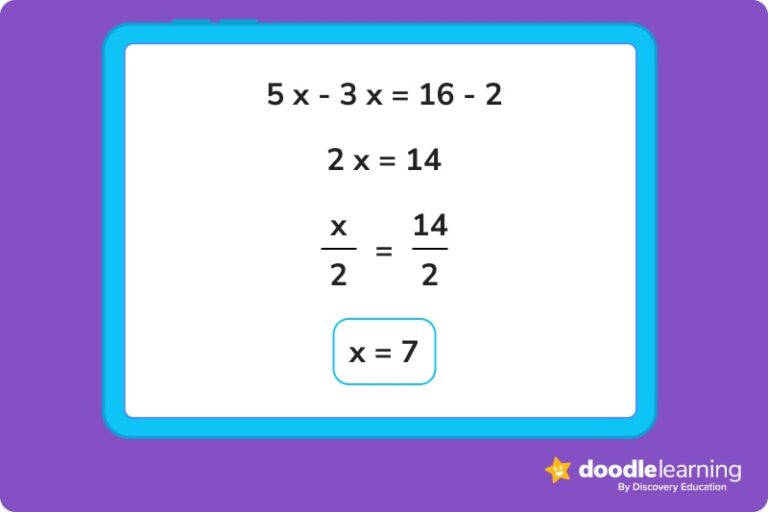
6. Take a look at the following equation: -16 = 12 + 2a. Rashid has suggested that (a = –2). Is he correct?
Answer: No (see solution below)
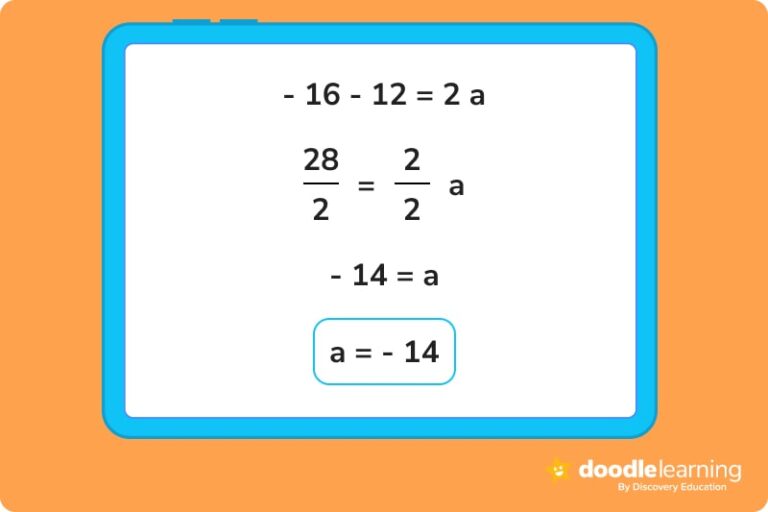
7. Solve the equation:
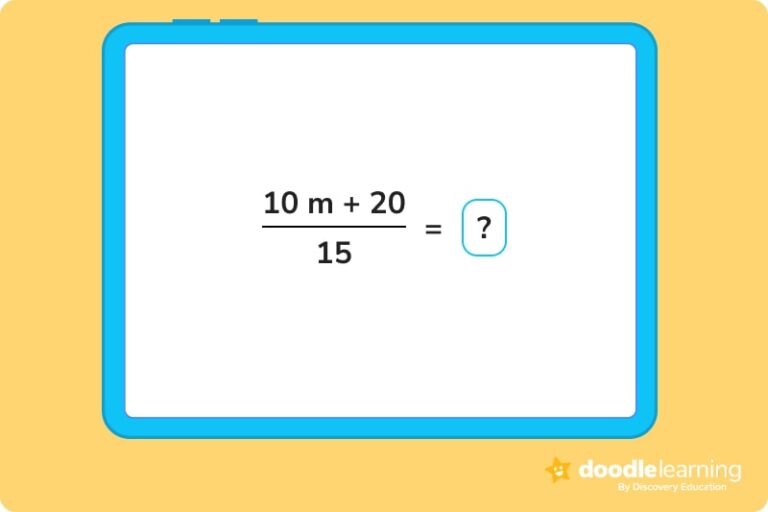
Answer: (see the solution below)
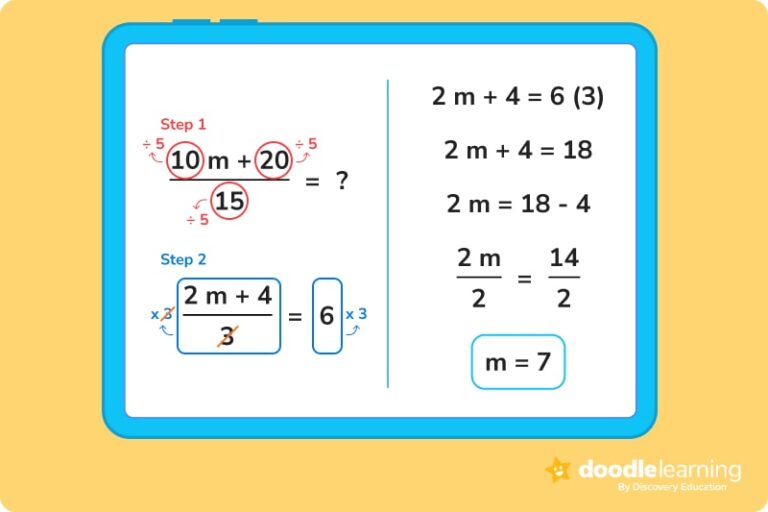
8. Complete the table below, then plot and draw a graph for the data.
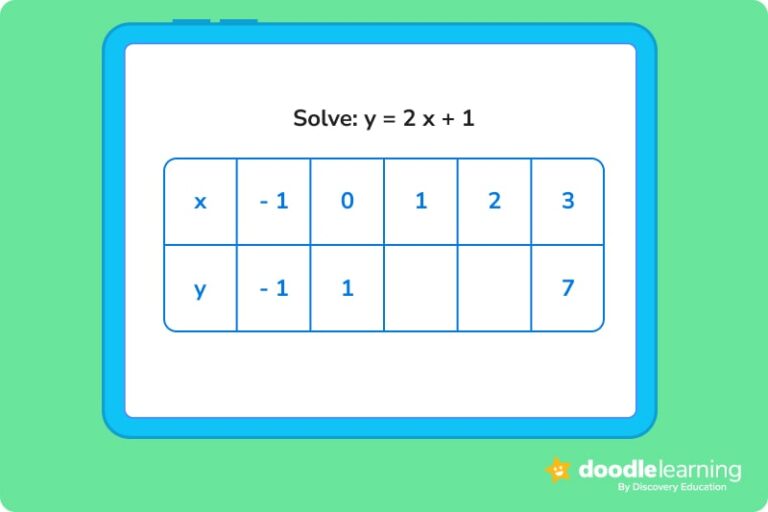
Answer: (see the solution below)
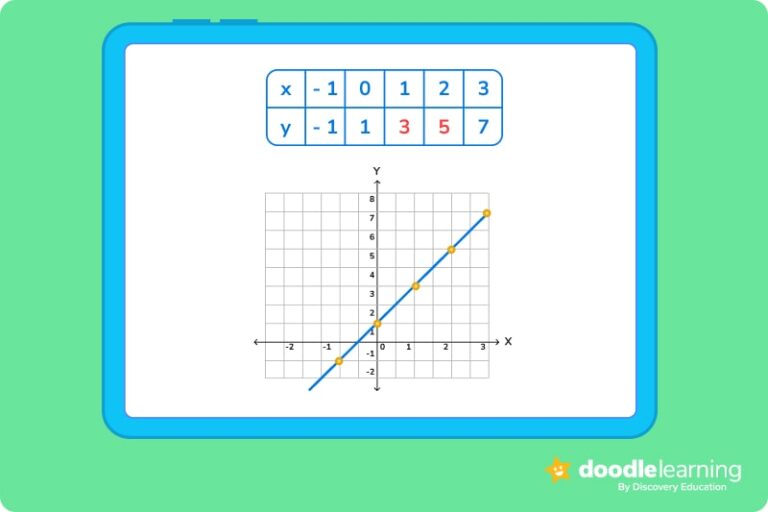
Unlock unlimited maths questions
Put your skills to the test with fun exercises + maths games that are proven to boost ability!
Try DoodleMaths for free!
Select a year group
9. Write each of the following ratios in their simplest form.
a) 21:14
b) 8:40
c) 10:4
Answer:
a) 3:2
b) 1:5
c) 5:2
10. A map is drawn at a scale of 1cm per 200 miles.
a) Write the scale of the map as a ratio.
b) How many miles would 7cm represent?
Answer:
a) 1:200
b) 1400 miles
11. If 8 maths textbooks cost a school £124, how much does:
a) 1 textbook cost?
b) 15 textbooks cost?
Answer:
a) £15.50
b) £232.50
12. Casey and Jordan set up a car wash for a weekend over the summer holidays. They make a total of £81 and agree to split the money at a ratio of 4:5. How much money does each person receive?
Answer:
Casey = £36
Jordan = £45
13. The current exchange rate means that $1 is worth 77 pence. How much would I receive in pounds (£) if I exchanged $20?
Answer: £15.40
14. What is the value of the angle marked x in this regular octagon?
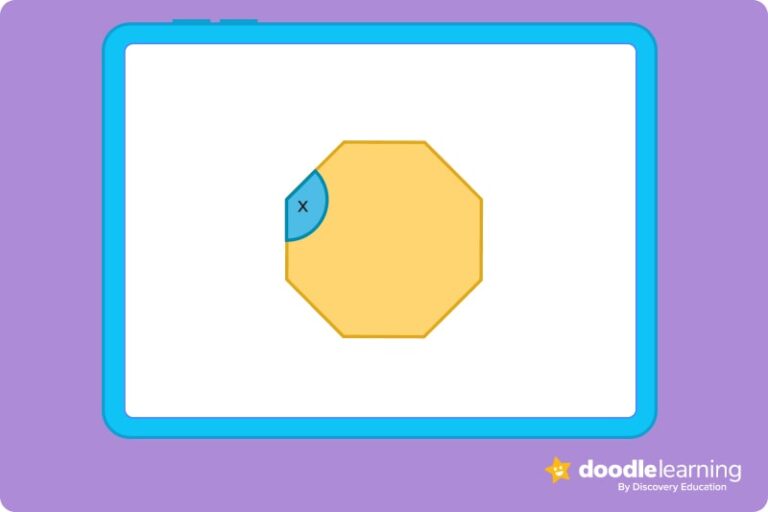
Answer: 360° ÷ 8 = 45°
15. Chloe was asked to calculate the angles in the irregular shape below. She stated that each of the angles is 72°.
Do you think she is right? Explain why or why not.
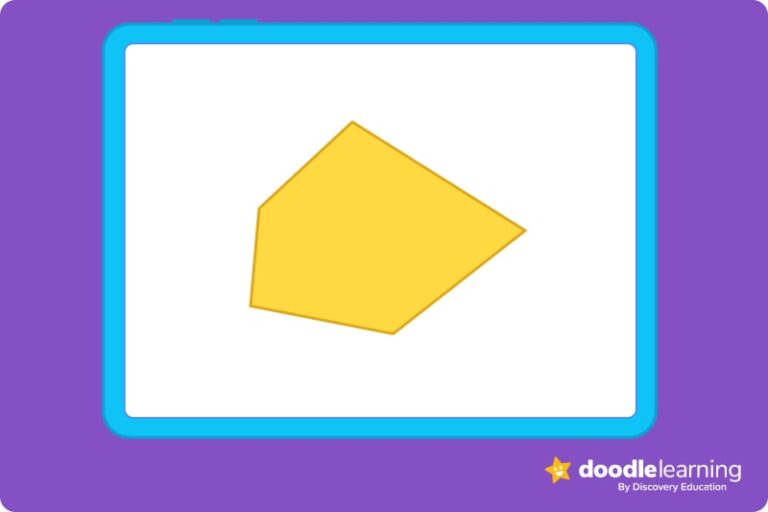
Answer: Chloe is not correct. The shape is irregular, meaning that not all sides and angles are equal. Therefore, the method of dividing 360° by the number of internal angles will not work.
16. Using the information below, find x and then use x to determine the length and width of the rectangle.
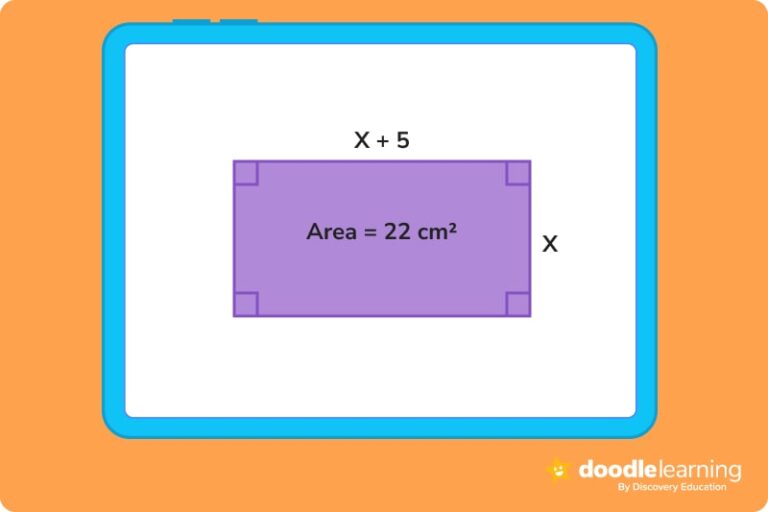
Answer: (see the solution below)
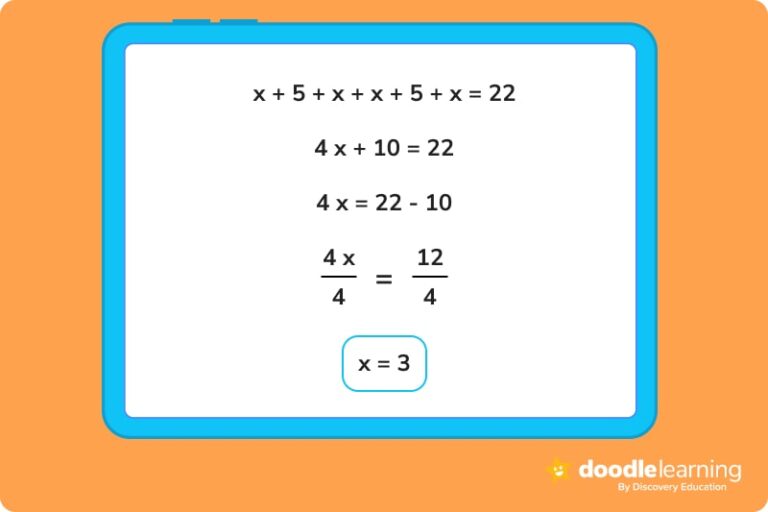
17. Use the information provided to calculate the missing angle.
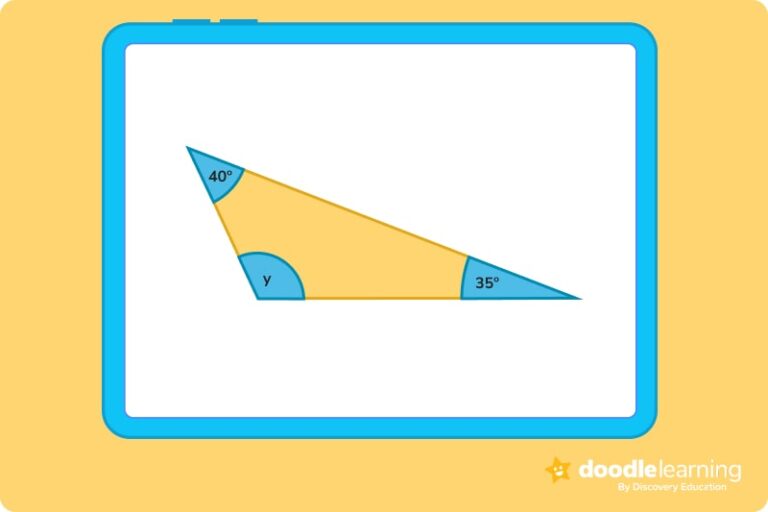
Answer: y = 105°
18. Use the information provided to calculate the missing angle.
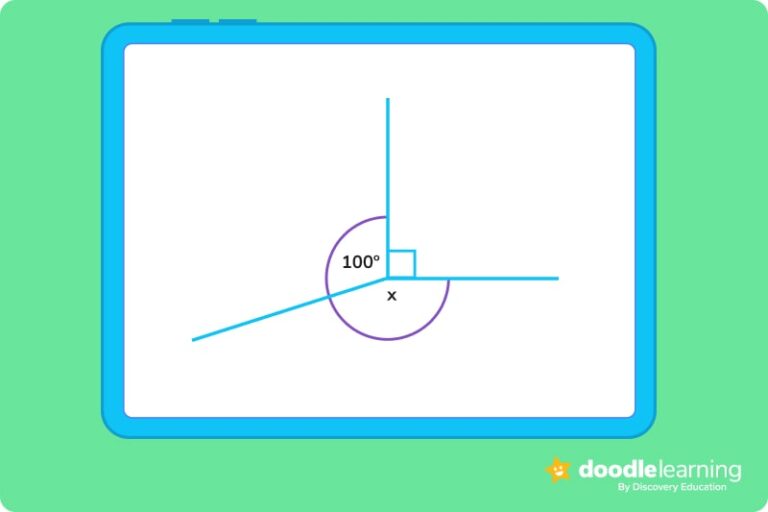
Answer: x = 170°
19. Use the information provided to calculate the missing angle.
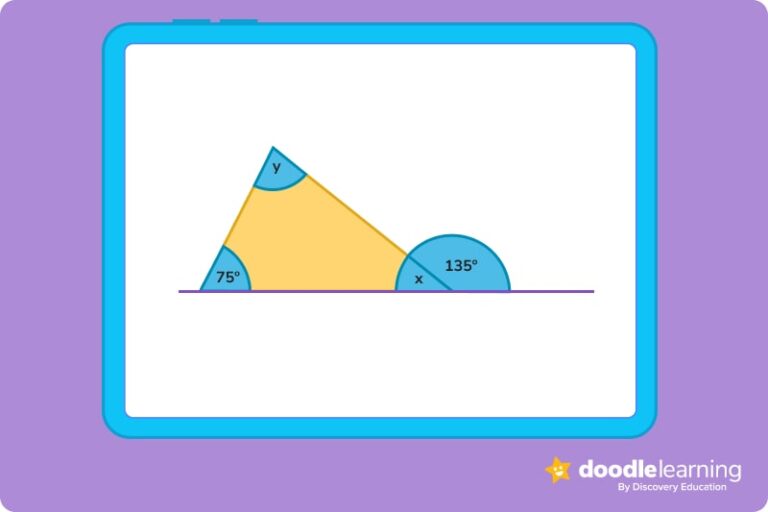
Answer: x = 45°, y = 60°
DoodleMaths is an award-winning app that’s filled with thousands of questions and games exploring multiplication, division and more!
Designed by teachers, it creates each child a unique work programme tailored to their needs, doubling their progression with just 10 minutes of use a day.* Try it for free!

*Based on earning 24 stars a day in DoodleMaths. Read the full study here.

20. What is the probability that the spinner below will land on an odd number? Show your answer as a fraction.
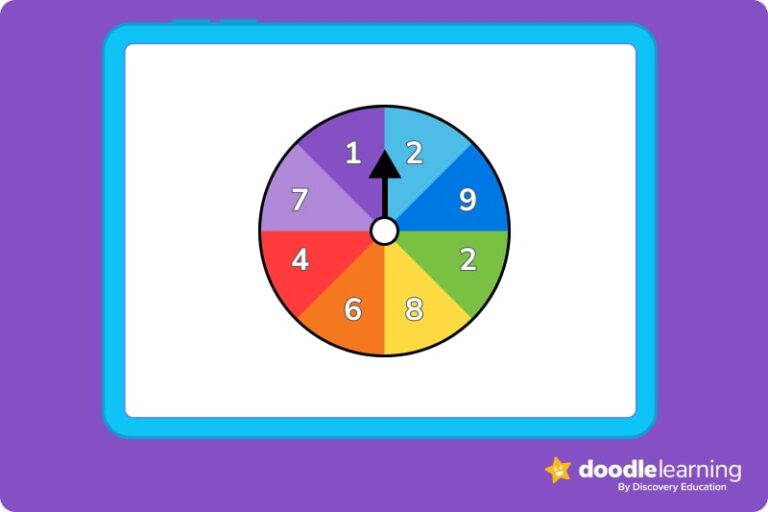
Answer: 3/8
21. Select a point on the number line to represent the following terms: a) certain b) even chance

Answer: a) 1 b) 5/10
22. A Year 8 is conducting a probability experiment. They are investigating how many possible outcomes there could be if they spin a spinner with numbers 1-8 on it and flip a coin.
How many possible outcomes are there?
Answer:
8 x 2 = 16
8 possible outcomes on the spinner
2 possible coin outcomes
23. A Year 8 maths class’ scores on a recent test are shown in the stem and leaf diagram below.
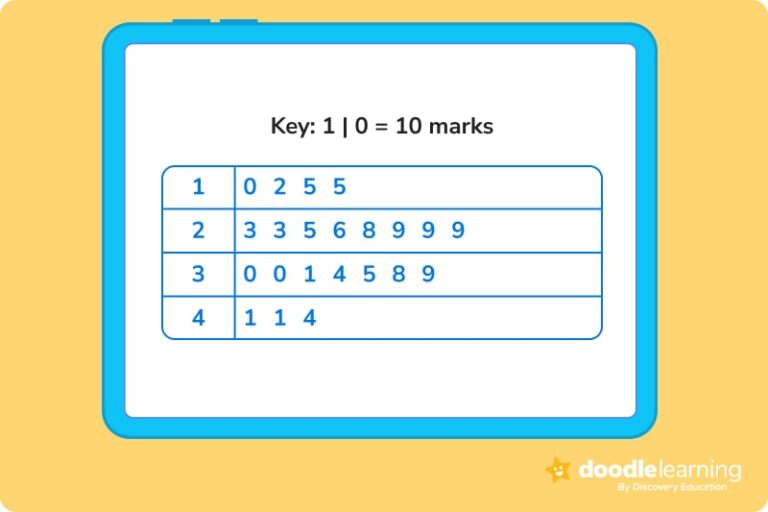
Use the data to answer the following questions.
a) How many students took the test?
b) How many students scored 29 marks?
c) What is the range of the scores?
d) Calculate the mean score.
Answers:
a) 22
b) 3
c) 34 (44 – 10 = 34)
d) 28.5
24. Here is another set of test results from a class’ recent maths test.
4, 2, 7, 5, 6, 9, 9, 1, 3, 6, 7,
6, 9, 10, 4, 6, 2, 8, 1, 10, 2,
3, 6, 5, 5, 10, 8, 7, 6, 7, 9
a) Create a table tallying the number of responses for each score.
b) Use the information to calculate the data needed to turn the results into a pie chart.
c) If you have a protractor and compass available, create a pie chart of the results.
Answers:
a)
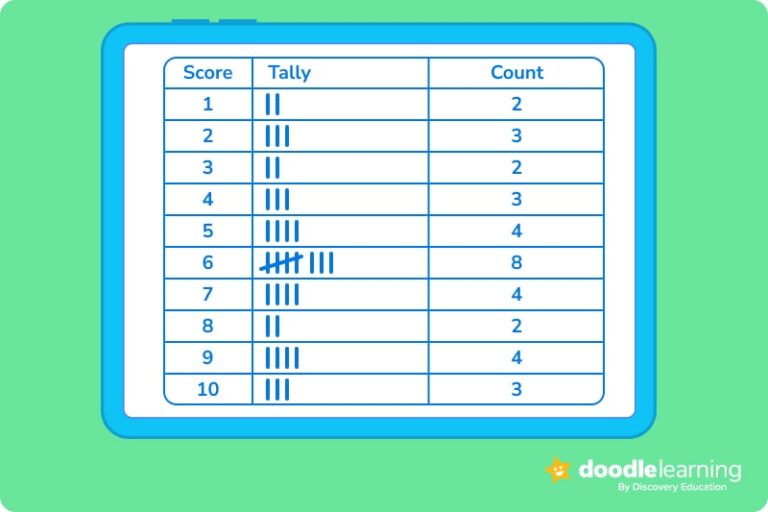
b)
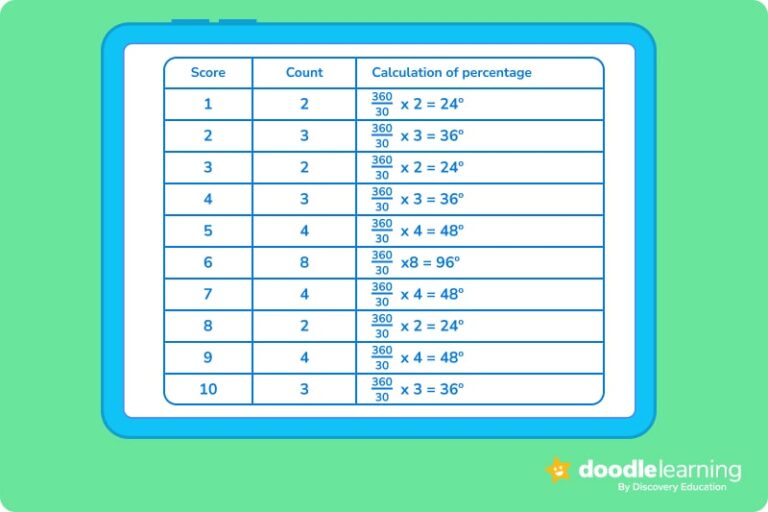
c)
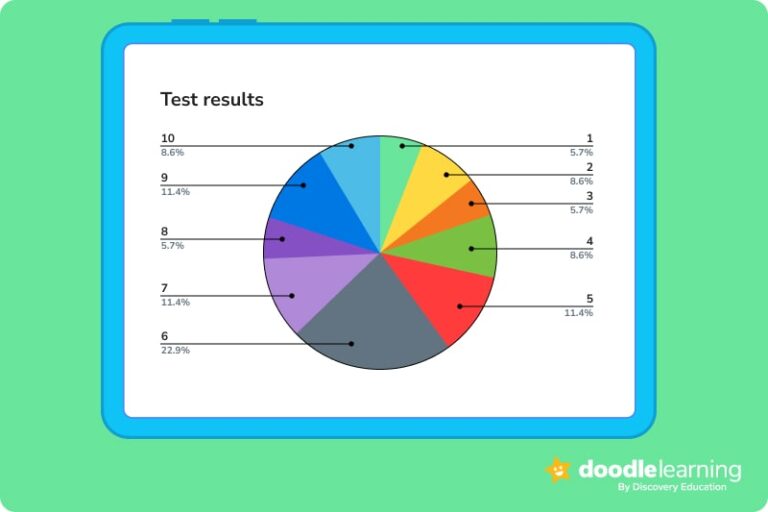
For more help and information on the Year 8 maths curriculum, be sure to take a look at our complete guide to the Year 8 curriculum and our advice for helping learners in Year 8.
If your learners get through these questions and are looking for even more revision, then they’ll love our Doodle Learning maths app! There are thousands of interactive games and activities to help students revise their way through even the trickiest Year 8 maths questions and topics.

Parents, sign up for a DoodleMaths subscription and see your child become a maths wizard!

Book a chat with our team
If you’d like to use Doodle’s browser version, please visit this page on a desktop.
To log in to Doodle on this device, you can do so through our apps. You can find out how to download them here: